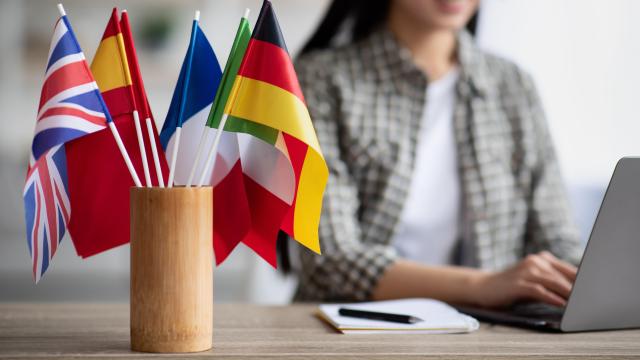Apps like Duolingo and Babbel make language learning easier than ever. If you’re trying to decide which of these two industry-leading apps to use, here’s a quick guide to help you figure out which one will best help you accomplish your goals.
How does Babbel work?
The Babbel program focuses on practical, conversational language. Lessons start by teaching you individual words before building on them to form phrases and then sentences. Eventually, the app will hold mock conversations, mixing in matching and fill-in-the-blank exercises to help strengthen the lessons.
These sessions take between 10 to 15 minutes and come from real-life native speakers. They’re quick, use multiple teaching methods and mimic natural conversation, which many users will find useful. Notably, the program doesn’t include a free tier, but it’s still reasonably affordable.
The pros of Babbel
The biggest advantage of using Babbel is that its lessons are highly practical: All of its pronunciation help comes from native speakers, and lessons focus on conversational speaking, which is better if you’re trying to actually communicate with native speakers of a given language.
Babbel offers a lot of support outside of its regular lessons. You can view live class sessions from language experts if you prefer a more traditional classroom experience over the app’s self-paced exercises. It also offers articles in all supported languages to help build your reading comprehension.
The app has a personalised review manager that highlights words you struggle with and offers ways to improve. Research suggests that personalisation improves learning outcomes, so this tool might be essential to helping you really progress in your study.
Babbel has weak spots too
The most significant downside to Babbel is its cost. A monthly subscription is $19.99 a month, though if you pay for a whole year at once, it breaks down to around $10 a month. You’ll also only get to study one language at a time for most subscriptions, and will have to pay extra for live classes.
The platform only offers courses in 14 languages, which is significantly less than some alternatives.
How does Duolingo work?
Like Babbel, Duolingo uses 10-15-minute lessons and starts with simple building blocks before moving to longer, conversational language. Like Babbel, these exercises also use spaced repetition, bringing back old lessons to help you remember them. While Duolingo doesn’t offer a personalised review manager, it does tailor lessons to the user.
Unlike Babbel, Duolingo’s courses are gamified. The app offers rewards and achievements for meeting your goals, making it feel more like a game and less like formal education. The most notable difference between the two apps is that Duolingo has a free version, while Babbel doesn’t.
Duolingo’s best feature is that it’s free
Duolingo’s most obvious benefit is that it’s free. The free version does have ads, but you can remove them for $10.83 a month, a rate comparable to Babbel’s cheapest tier. Duolingo also supports 38 different languages for English-language learners, with more on the way, compared to Babbel’s 14.
The app’s use of “gamification” to spur you to keep using it can also be a helpful way to stay motivated to learn. Trying to maintain any course of study over the long term — which you’ll need to do if you really want to make language learning useful — can be hard, as your focus and engagement wane. Gamifying the experience can help you work past that.
Duolingo’s exercises are also broad and diverse, using multiple methods to avoid repetition and match different learning styles.
Duolingo is only as good as the AI that drives it
While Duolingo’s lessons are helpful, they don’t offer as much outside support as Babbel. Some users also complain that the app’s language doesn’t feel very natural.
That’s likely because where Babbel’s resources come from natural speakers, Duolingo’s are generated by AI. As a result, its lessons are typically more vocabulary-focused and often include uncommon sentence structure and grammar, which can make Duolingo far less practical when it comes to actually using a language in real life.
Which is better, Babbel or Duolingo?
New language learning spiked during early lockdowns, and as more and more people flock to these apps, you probably want to know which is the best choice. Overall, Babbel is the best option for those seeking a more practical and in-depth learning experience. Its use of native speakers and abundant resources are hard to beat — but come at a cost.
Duolingo is still a good choice for casual language learners, especially those on a budget. If you’re just trying to brush up on a language or don’t expect to use it much long-term, this easy, free option can be a good choice.

Leave a Reply
You must be logged in to post a comment.